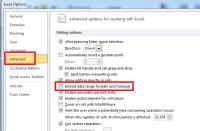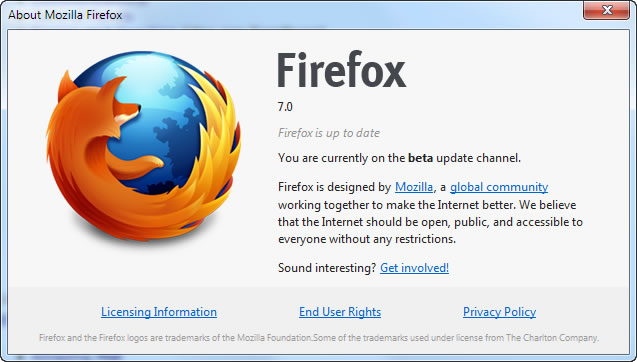Motorola Mobility Moves to Google
If you own any stock in Motorola Mobility, the mobile phone component that Motorola spun off as a separate company not too long ago, you should be smiling this week. Overnight the value of your stock increased by 60 percent. Not a bad return for a company that didn't seem to be particularly healthy. What happened? Google happened.
Hang on just a second. Let me get these out of the way first. You'll probably see or hear most of these in the following weeks.
- Googorola.
- Motoroogle.
- Motorgoogarola.
- Googoomotor.
- Googomotogate.
- Motoroogageddon.
Well maybe not the last three but certainly the first three.
Google will pay $12.5 billion dollars for the cell phone manufacturer and even for Google that's more than just pocket change. In fact, it's the largest acquisition ever for Google.
Motorola makes Android phones. Those are the ones that Google supports, of course, with its Android software. Steve Jobs would say that Android isn't as popular as Apple's Iphone and its IOS software and indeed Android's market share has been dropping. Android's market share is now slightly under 50%. By comparison, Apple has about 30% of the market. Apple's share has been growing since its phones became available for Verizon in addition to AT&T.
According to Google, more than 150 million Android devices have been activated worldwide through a network of nearly 40 manufacturers and 231 carriers in 123 countries. Each day about half a million Android devices are activated. Google doesn't claim that all of these activated devices represent new users of Android devices and some of the phones certainly are being activated as replacements for existing Android devices.
Google says that the acquisition will not change its commitment to run Android as an open platform. Motorola will remain a licensee of Android and Android will remain open. Motorola Mobility and its employees will apparently stay put in Illinois and Google will run the company as a separate business. "Many hardware partners have contributed to Android’s success and we look forward to continuing to work with all of them to deliver outstanding user experiences," is how Google explained it.
As part of the acquisition, Google will also pick up more than 20,000 patents held by Motorola.
Personal note to Google CEO Larry Page: When are you going to offer a mobile phone service? The United States needs a new phone service. We have AT&T and Verizon. The also-rans include Sprint/Nextel and T-Mobile but AT&T is about to gobble up T-Mobile. Years ago I kept changing lawn care service providers because a large company that I didn't like kept buying the companies that I selected. I don't want to be an AT&T customer. I don't want to be a Verizon customer. I'm not sure that I want to be a Google customer but at least you would offer a third option and you're big enough that neither AT&T nor Verizon would be likely to eat you.
How Much Camera Do You Need?
I'm always a bit amused when somebody asks "What kind of camera do you use?" That question usually follows a comment about an image that I'm particularly happy about. In most cases, the correct answer is "It doesn't matter." If you're wondering why, stick with me for a moment.
I have a Nikon D200 digital single-lens-reflex (DSLR) camera that is my choice when I need to be able to shoot quickly but I don't have it with me all the time. There's a Canon point-and-shoot (POS) camera in the briefcase I carry to and from work and most people can't tell which of those two cameras took any particular image.
When I want the ability to shoot raw-format images (my preference in all cases) but I don't want the bulk and weight of the Nikon DSLR, I call on an advanced POS from Canon, the D12. Composition delay and shutter lag would make this camera unsuitable for capturing images of the Indianapolis 500 but it's more than adequate for most work.
The D12 has a much smaller sensor than the Nikon so the images will contain more noise. There's no escaping the laws of physics and a smaller sensor will always be nosier than a larger sensor. Even so, on a recent visit to the Franklin Park Conservatory, I was able to capture several pleasing images of flowers and blown-glass art (neither of which move around much) and also of bees and butterflies (both of which move a lot and with total disregard for the photographer).
 When I came back from the Franklin Park Conservatory, I had nearly 200 images. I was able to rule out half of them in a quick run-through. Following additional work on the images (cropping, color correction, and other enhancements) I trimmed the output to about 60 images and to just a dozen or so that I'm particularly happy with.
When I came back from the Franklin Park Conservatory, I had nearly 200 images. I was able to rule out half of them in a quick run-through. Following additional work on the images (cropping, color correction, and other enhancements) I trimmed the output to about 60 images and to just a dozen or so that I'm particularly happy with.
So it's not what kind of camera you use but how much effort you put into capturing images.
Here are the other pictures from the Franklin Park Conservatory.
Another Badly Chosen Microsoft Default
Microsoft has a nasty habit of creating useful features that only a few people will want and then making these features the default. A co-worker came to me with a question about Excel this week. He had filled in several cells with numbers and then colored the cells yellow. He found that when he entered additional numbers in the same column that they were also highlighted yellow. And no, this is not a case of Conditional Formatting. No rules are defined by default.
So after confirming that he was not using conditional formatting, I decided to try to replicate the problem in Excel 2007 I got the same results. Then I tried Excel 2010. Same thing.
Try this yourself:
- Enter a number. Press Enter, then select the cell and color it yellow. Press Enter again to move to the next cell.
- Enter a number. Press Enter, then select the cell and color it yellow. Press Enter again to move to the next cell.
- Enter a number. Press Enter, then select the cell and color it yellow. Press Enter again to move to the next cell.
- Enter a number. Press Enter and the cell will automatically be highlighted yellow.
Sometimes, after skipping a few cells, a cell with a number will not be highlighted. For my second test, I tried this:
Type 123 and press Enter. Manually color the cell yellow and press Enter.
Type 123 and press Enter. Manually color the cell yellow and press Enter.
Type 123 and press Enter. Manually color the cell yellow and press Enter.
Type 123 and press Enter. Excel colors the cell yellow. Press Enter.
Type 123 and press Enter. Excel colors the cell yellow. Press Enter.
Type 456 and press Enter. Excel colors the cell yellow. Press Enter.
Press Enter to skip a cell.
Press Enter to skip a cell.
Type 789 and press Enter. Excel colors the cell yellow. Press Enter.
Press Enter to skip a cell.
Type 10 and press Enter. Excel adds no color.
Type 111 and press Enter. Excel adds no color.
Type 123 and press Enter. Excel adds no color.
What's going on here?
The workaround I found was to specify the column as "text" instead of "general" but that seemed too heavy handed. There must be a way to turn this "feature" off, I thought but all of my searches led to discussions of how to automatically color cells not how to make automatic coloring stop.
Fortunately, Excel MVPs (most valued professional) hang out at http://social.msdn.microsoft.com/Forums/en-US/exceldev and when I asked there I was embarrassed by the answer.
Siddharth Rout wrote from the UK:
"Yes this behavior is by default and you can switch this off :)
 In Excel 2010, Click on the File Tab ~~> Excel Options and then in the 'Excel options' dialog box, Click on the Advanced tab. In that Tab, uncheck the option that says "Extend Data Range formats and formulas". See snapshot :)"
In Excel 2010, Click on the File Tab ~~> Excel Options and then in the 'Excel options' dialog box, Click on the Advanced tab. In that Tab, uncheck the option that says "Extend Data Range formats and formulas". See snapshot :)"
Yes, I should have thought to look there but I didn't.
I can understand why a user might want this behavior but it seems to me that most users won't want Excel to change cell colors on its own. This is not an isolated instance of misdirected and unwanted assistance.
- One of Microsoft's worst decisions ever was to hide file extensions by default. Knowing what kind of file you're looking at requires understanding the meaning of the file's icon.
- Both Word and Outlook will automatically replace a word it thinks I've misspelled with the word it thinks should be there unless I turn the feature off. I type "refeed" (meaning to send a data file again) and Outlook changes it to "reefed" (meaning to reduce the size the the sails on a sailboat). Why? Show me the word if you must but don't automatically change it! (This feature can be turned off. I have turned it off.)
Microsoft's developers have a lot of really good ideas when it comes to making applications help the people who use them. But the developers need someone nearby who has enough common sense to recognize when one of those really good ideas will simply confuse those of us who use the applications.
Short Circuits
A Laptop Computer for $33.33?
Do you think that you can buy a laptop computer for $33.33? Apparently somebody has convinced Google that it's OK to run an ad making this claim. This is the offer I've been seeing recently when I view Google mail. Do you really think I can buy a working laptop computer for $33.33?

What do you think that you might be able to get for less than $50? A few parts, perhaps. Certainly not a functional computer.
Recently I purchased a used computer for $169. It's an IBM ThinkPad laptop, about 6 years old, with a Pentium 4M processor, 2GB of RAM, and a 30GB hard drive. It came with Windows XP but I installed Windows 7 on it even though the video subsystem isn't beefy enough to support Aero.
Even so, this was an incredibly good buy. For the purpose, I didn't need a high-performance laptop—just a machine that would run Windows 7 adequately and handle some Web browsing.
But examine this ad by Google. Note that it doesn't actually offer laptops for $33.33 so I can't actually call the advertisement a fraud. And I can't say that Google is a willing participant in what I can't call a fraud. The ad asks "$33.33 Overstock Laptops?" The reasonable answer is, "Of course not!" And there's the weasel-worded "as low as", which is the equivalent of $33.33 and up. Way up. Sorry, but we sold all of the $33.33 computers but we do have some really great computers for $3333.
I don't know which is sadder:
- Utterly ridiculous offers such as this?
- The fact that Google accepts them without question?
- The fact that they apparently work because suckers are still being born every minute?
The Future Web at TechByter Worldwide. Maybe.
If you pay any attention to the language that runs the Web (HTML) you may know that a lot of people, including me, thought that the future would be XHTML. The goal was to make HTML more like XML and to make it more compliant with standards than is HTML. A badly written XHTML file would simply not be rendered by a browser. That decision had the potential to break millions of pages.
Even though TechByter worldwide has used XHTML Transitional specifications for the past couple of years (see <!DOCTYPE html PUBLIC "-//W3C//DTD XHTML 1.0 Transitional//EN" "http://www.w3.org/TR/xhtml1/DTD/xhtml1-transitional.dtd"> at the top of each page of code) most of the pages here wouldn't pass XHTML Strict specifications.
You can thank one of the more standards-complaint browser companies (Opera) for making enough fuss that the push to XHTML was dropped, at least for now.
Instead, the future is HTML5 and the specification for it is currently hovering around 1000 pages. Fortunately, about two thirds of those pages tell the people who write browsers how the browsers should render code—even when the code is badly written. The other third is for people like me who write Web pages.
The annual website redesign will go live in January 2012 and this site will probably be coded in HTML5 at that time. I'll need to make that decision by mid October at the latest and the decision will be based on how well the current crop of browsers support the HTML5 features that I'll want to use. In fact Internet Explorer 9, Chrome 13, Firefox 6, and Opera 11.5 all do a reasonably good job with the new standard.
Not all earlier browser versions (particularly Internet Explorer) will fare so well, though, and that has to be part of the decision because some people fail to update their browsers despite the security dangers of not doing so. TechByter readers, though, are pretty good about keeping browsers updated:
- IE 9 (good support): 7%.
- IE 8 (mediocre support): 11%.
- IE all others (poor support or no support): 9%.
- Firefox 5 or 6 (good support): 20%.
- Firefox 4 (some support): 2%.
- Firefox earlier versions (forget about it): less than 5%.
- Netscape any version (no support): less 0.1 percent.
- Opera 9 or higher (support): 2%
- Chrome 11 through 15 (good support): 11%
- Safari 5 or 6 (some support): 5%
- Various mobile devices: 20%.
That adds up to about 92%. The remaining 8% are the antique browsers such as Chrome 2, Safari 1, Opera 3, Firefox 2, and Internet Explorer 3. If you're still using one of those, do yourself a favor and upgrade to a new browser.
In most browsers HTML5 should (note the presence of the weasel word) degrade gracefully, which means that you might not see the site as I intended it to be seen but it won't break your browser and it will be readable.
Oh ... By the Way ...
Firefox 7 (beta) was released late this week. Apparently this means that the current stable release version of Firefox is version 6.
Wow.

- Firefox: 2004
- Firefox 2: 2006.
- Firefox 3: 2008.
- Firefox 4: March 2011.
- Firefox 5: June 2011.
- Firefox 6: August 2011.
- Firefox 7: Coming soon. Currently in beta.
Surprised? You shouldn't be. Here's the scoop from Wikipedia: "A draft road map indicates that Mozilla hopes to release versions 6 and 7 in 2011 following the release of Firefox 5 in June 2011. Despite the incremented major version numbers, these versions will be smaller incremental updates, primarily focusing on improving speed, stability and security. As of July 2011, Firefox 6 is in beta testing, Firefox 7 is in the "Aurora" channel, and Firefox 8 is in the "Nightly Test Build" channel. [BB Note: Access logs show that Firefox 8 has been used to access the TechByter Worldwide website.] Firefox 8 is 20% faster than Firefox 5, measured on several metrics, placing it on par with the performance of the in-development Google Chrome 14. Firefox 7, scheduled to be released in September 2011, will use as much as 50% less memory than Firefox 4 as a result of the MemShrink project to reduce Firefox memory usage."
The rate of change continues to exceed the rate of progress.


 The author's image: It's that photo over at the right. This explains why TechByter Worldwide was never on television, doesn't it?
The author's image: It's that photo over at the right. This explains why TechByter Worldwide was never on television, doesn't it?
